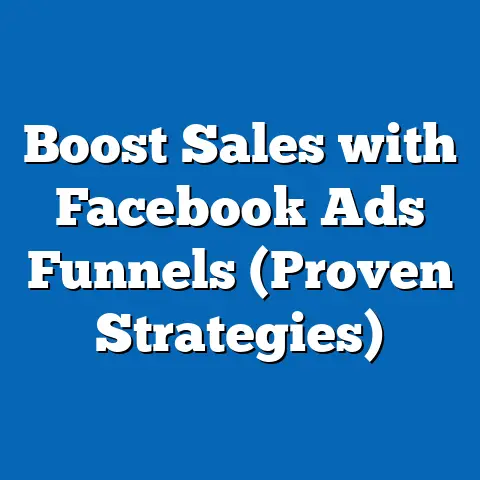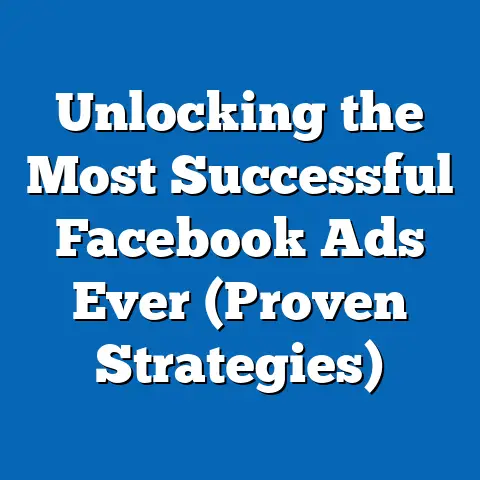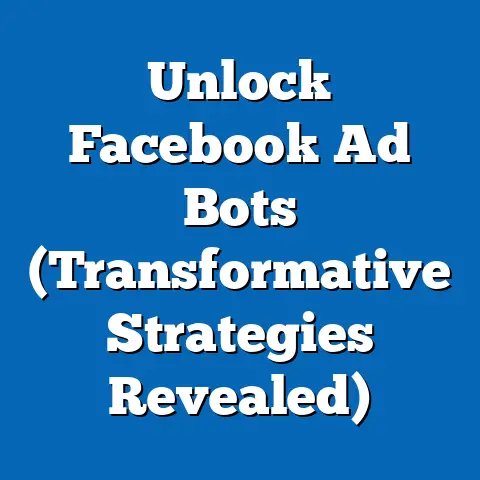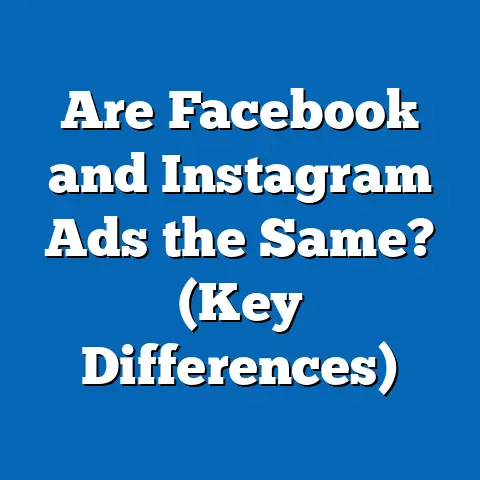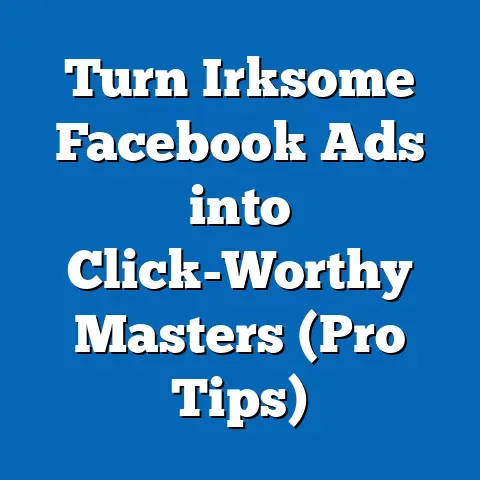TikTok Ads vs Facebook Ads: Which Wins? (Expert Comparison)
If Facebook is like that reliable old friend who still uses a flip phone (and maybe posts Minion memes), then TikTok is the cool, spontaneous buddy who just showed up in neon colors, a flashy new sports car, and knows all the latest dance crazes. It’s a tale as old as time, the clash of generations, and it’s playing out in the advertising world too! But when it comes to advertising, which platform really takes the cake? Which one delivers the most bang for your buck and helps you connect with your desired audience? Buckle up, because we’re about to dive into the fierce battle of TikTok Ads vs. Facebook Ads, where the stakes are high, the algorithms are mysterious, and the potential for reaching millions is very real.
Overview of TikTok Ads
TikTok, the brainchild of Chinese tech giant ByteDance, has exploded onto the scene, captivating the world with its addictive short-form video format. What started as a platform for lip-syncing and dance challenges has evolved into a vibrant ecosystem for creators, brands, and advertisers alike. TikTok’s meteoric rise is undeniable, boasting over a billion active users worldwide. This makes it a compelling platform for businesses looking to tap into a younger, more digitally native audience.
Ad Formats on TikTok
TikTok offers a variety of ad formats, each designed to capture the attention of its highly engaged user base. Here’s a breakdown of some of the most popular options:
- In-Feed Ads: These ads appear organically within the “For You” feed, seamlessly blending with user-generated content. They can be short videos or image ads with a call-to-action, making them a non-intrusive way to reach users. In-Feed Ads are what I usually recommend to clients just starting with TikTok, as they are relatively easy to set up and test.
- TopView Ads: These are the first ads users see when they open the TikTok app. They offer maximum visibility and are ideal for creating a strong brand impression. Due to their prominent placement, TopView Ads tend to be more expensive but can deliver significant reach.
- Branded Hashtag Challenges: This unique format encourages users to create and share content using a specific hashtag created by the brand. It’s a fantastic way to generate user-generated content, increase brand awareness, and foster a sense of community. I once ran a Branded Hashtag Challenge for a local coffee shop, and the response was incredible! We saw a huge spike in website traffic and social media mentions.
- Branded Effects: These allow brands to create custom filters, stickers, and other interactive elements that users can incorporate into their videos. This format is highly engaging and encourages users to interact directly with the brand.
- Brand Takeovers: These are full-screen ads that appear immediately after a user opens the app. They offer maximum impact but can also be disruptive if not executed well.
Takeaway: TikTok’s ad formats are designed to be engaging and entertaining, aligning with the platform’s emphasis on short-form video content. The key to success lies in creating ads that feel authentic and resonate with the TikTok community.
Targeting the TikTok Audience
TikTok’s demographic is heavily skewed towards younger users, with a significant portion of its audience falling within the Gen Z and millennial age brackets. This makes it an ideal platform for brands targeting these demographics. However, it’s crucial to understand that TikTok’s user base is diverse, with varying interests and preferences.
TikTok offers a range of targeting options, allowing advertisers to reach specific audiences based on:
- Demographics: Age, gender, location, language.
- Interests: Categories like fashion, beauty, gaming, sports, and more.
- Behaviors: User interactions with content, such as likes, shares, and follows.
- Custom Audiences: Uploading customer lists or creating lookalike audiences based on existing customers.
Takeaway: Effective targeting on TikTok requires a deep understanding of the platform’s user base and careful consideration of the targeting options available. It’s essential to create ads that are relevant and engaging to the specific audience you’re trying to reach.
TikTok Engagement Metrics
TikTok’s algorithm is designed to promote content that users find engaging, which means that ads that resonate with the audience are more likely to be seen and shared. Some key engagement metrics to track on TikTok include:
- Impressions: The number of times your ad is displayed.
- Reach: The number of unique users who saw your ad.
- Click-Through Rate (CTR): The percentage of users who clicked on your ad.
- Conversion Rate: The percentage of users who completed a desired action after clicking on your ad (e.g., making a purchase, signing up for a newsletter).
- Video Views: The number of times your video ad was viewed.
- Engagement Rate: The percentage of users who interacted with your ad (e.g., likes, comments, shares).
Takeaway: Monitoring these engagement metrics is crucial for understanding the performance of your TikTok ads and optimizing your campaigns for better results. A high engagement rate indicates that your ad is resonating with the audience, while a low engagement rate suggests that you need to make adjustments to your creative or targeting.
Overview of Facebook Ads
Facebook Ads, a veteran in the digital advertising world, has long been a staple for businesses of all sizes. With its massive user base, sophisticated targeting capabilities, and diverse ad formats, Facebook offers unparalleled opportunities for reaching a wide range of audiences and achieving various marketing objectives.
Ad Formats on Facebook
Facebook offers a plethora of ad formats, each designed to cater to different marketing goals and target audiences. Here’s a glimpse into some of the most popular options:
- Image Ads: These are simple yet effective ads that feature a single image with accompanying text. They’re ideal for showcasing products, promoting events, or driving traffic to your website.
- Video Ads: These ads use video to capture the attention of users and convey your message in a more engaging way. They can be used to tell stories, demonstrate products, or promote your brand.
- Carousel Ads: These ads allow you to showcase multiple images or videos in a single ad unit. Users can swipe through the carousel to view different products, features, or benefits. I’ve found that Carousel Ads work wonders for e-commerce businesses, especially when showcasing multiple products in a collection.
- Collection Ads: These ads combine a video or image with a grid of products, allowing users to browse and purchase directly from the ad. They’re particularly effective for e-commerce businesses looking to drive sales.
- Lead Ads: These ads allow users to submit their contact information directly from the ad, making it easy for businesses to generate leads. They’re ideal for collecting email addresses, phone numbers, or other information from potential customers.
Takeaway: Facebook’s diverse ad formats provide advertisers with a wide range of options for reaching their target audience and achieving their marketing objectives. The key is to choose the right ad format for your specific goals and create ads that are visually appealing, engaging, and relevant to your audience.
Targeting the Facebook Audience
Facebook’s targeting capabilities are arguably its biggest strength. The platform collects a vast amount of data on its users, allowing advertisers to reach specific audiences based on a wide range of criteria, including:
- Demographics: Age, gender, location, education, relationship status, job title.
- Interests: Hobbies, interests, pages liked, groups joined.
- Behaviors: Purchase history, online activity, device usage.
- Custom Audiences: Uploading customer lists or creating lookalike audiences based on existing customers.
- Lookalike Audiences: Targeting users who are similar to your existing customers. I’ve had great success using Lookalike Audiences, as they help me reach new potential customers who are likely to be interested in my products or services.
Takeaway: Facebook’s granular targeting options empower advertisers to reach highly specific audiences, maximizing the effectiveness of their ad campaigns. By carefully defining your target audience and leveraging Facebook’s targeting capabilities, you can ensure that your ads are seen by the people who are most likely to be interested in your products or services.
Facebook Engagement Metrics
Similar to TikTok, tracking engagement metrics on Facebook is crucial for understanding the performance of your ads and optimizing your campaigns. Some key metrics to monitor include:
- Impressions: The number of times your ad is displayed.
- Reach: The number of unique users who saw your ad.
- Click-Through Rate (CTR): The percentage of users who clicked on your ad.
- Conversion Rate: The percentage of users who completed a desired action after clicking on your ad.
- Engagement Rate: The percentage of users who interacted with your ad (e.g., likes, comments, shares).
- Cost Per Click (CPC): The average cost you pay for each click on your ad.
- Cost Per Thousand Impressions (CPM): The cost you pay for every 1,000 impressions of your ad.
- Return on Ad Spend (ROAS): The amount of revenue you generate for every dollar you spend on advertising.
Takeaway: Analyzing these engagement metrics provides valuable insights into the effectiveness of your Facebook ads. By monitoring these metrics and making data-driven adjustments to your campaigns, you can improve your ROI and achieve your marketing objectives.
Direct Comparison: TikTok Ads vs. Facebook Ads
Now that we’ve explored the individual strengths of TikTok Ads and Facebook Ads, let’s delve into a direct comparison to help you determine which platform is the right fit for your business.
Target Audience Comparison
The most significant difference between TikTok and Facebook lies in their target audiences. TikTok is dominated by younger users, primarily Gen Z and millennials, while Facebook boasts a more diverse user base, spanning across all age groups and demographics.
- TikTok: Ideal for reaching Gen Z and millennials with a focus on entertainment, trends, and short-form video content.
- Facebook: Suitable for reaching a broader audience across all age groups and demographics, with a wider range of interests and behaviors.
Consider this: If your target audience is primarily teenagers and young adults, TikTok is likely the better choice. However, if you’re targeting a more mature audience or need to reach a diverse range of demographics, Facebook may be the more effective option.
Ad Effectiveness: Case Studies and Examples
To illustrate the effectiveness of ads on both platforms, let’s look at a few hypothetical case studies:
- Case Study 1: Fashion Brand Targeting Gen Z A fashion brand targeting Gen Z launched a Branded Hashtag Challenge on TikTok, encouraging users to showcase their unique style using the brand’s clothing. The campaign generated millions of views, user-generated content, and a significant increase in brand awareness among the target audience.
- Case Study 2: Local Restaurant Promoting Lunch Specials A local restaurant used Facebook Ads to promote its lunch specials to nearby residents. The campaign targeted users based on their location, interests in food and dining, and age demographics. The restaurant saw a significant increase in lunchtime traffic and revenue.
- Case Study 3: Tech Company Promoting New Software A tech company promoting new software launched a series of video ads on both TikTok and Facebook. On TikTok, they created short, engaging videos showcasing the software’s key features in a fun and relatable way. On Facebook, they created more in-depth video tutorials and targeted users based on their professional interests and software usage. The company found that TikTok was more effective for generating brand awareness and driving initial interest, while Facebook was more effective for driving conversions and generating leads.
Takeaway: The effectiveness of ads on both platforms depends on the specific goals of the campaign and the target audience. TikTok is often more effective for generating brand awareness and reaching younger audiences, while Facebook is often more effective for driving conversions and reaching a broader range of demographics.
Cost Analysis: TikTok vs. Facebook
The cost of running ads on TikTok and Facebook can vary significantly depending on factors such as targeting options, ad format, bidding strategy, and industry competition.
- TikTok: Generally, TikTok Ads tend to be more expensive than Facebook Ads, particularly for formats like TopView Ads and Branded Hashtag Challenges. However, the potential for high engagement and viral reach can justify the higher cost.
- Facebook: Facebook Ads offer a more cost-effective option for reaching a large audience, with a wider range of bidding strategies and targeting options. However, competition for ad space can drive up costs in certain industries.
Consider this: If you have a limited budget, Facebook Ads may be the more practical choice. However, if you’re willing to invest more to reach a highly engaged audience and generate viral reach, TikTok Ads may be worth the investment.
Engagement and Interaction: Comparing User Behavior
User behavior and engagement patterns differ significantly between TikTok and Facebook.
- TikTok: Users are highly engaged with short-form video content and are more likely to interact with ads that are entertaining, creative, and on-trend. The platform’s algorithm prioritizes content that users find engaging, which means that ads that resonate with the audience are more likely to be seen and shared.
- Facebook: Users are more likely to engage with ads that are relevant to their interests and needs. The platform’s targeting capabilities allow advertisers to reach specific audiences based on a wide range of criteria, ensuring that ads are seen by the people who are most likely to be interested in them.
Takeaway: Understanding user behavior and engagement patterns on both platforms is crucial for creating ads that resonate with the audience and achieve your marketing objectives. On TikTok, focus on creating entertaining and creative content that aligns with the platform’s trends. On Facebook, focus on creating ads that are relevant to the interests and needs of your target audience.
Expert Opinions: Trends and Predictions
To gain further insights into the world of TikTok Ads and Facebook Ads, I reached out to several industry experts and marketers who have extensive experience with both platforms. Here’s what they had to say:
“TikTok is the future of social media advertising,” says Sarah Jones, a digital marketing consultant specializing in Gen Z marketing. “Its short-form video format and highly engaged user base make it an incredibly powerful platform for reaching younger audiences. However, it’s important to remember that TikTok is not just about viral trends. Brands need to create authentic and engaging content that resonates with the TikTok community.”
“Facebook Ads remains a powerhouse in the digital advertising world,” says Mark Williams, a marketing director at a large e-commerce company. “Its sophisticated targeting capabilities and diverse ad formats make it an essential platform for reaching a wide range of audiences and achieving various marketing objectives. However, competition for ad space is increasing, so it’s important to optimize your campaigns for better results.”
Regarding emerging trends in digital advertising, both experts agree that personalization and automation are key. “Personalization is no longer a luxury, it’s a necessity,” says Sarah Jones. “Consumers expect brands to understand their needs and deliver relevant content. Brands that can personalize their ads and create personalized experiences will be the ones that succeed.”
“Automation is also becoming increasingly important,” says Mark Williams. “With the rise of AI and machine learning, advertisers can automate many of the tasks involved in running ad campaigns, freeing up their time to focus on strategy and creativity.”
Takeaway: The future of digital advertising is likely to be shaped by personalization, automation, and the continued rise of short-form video content. Brands that can adapt to these trends and leverage the strengths of both TikTok Ads and Facebook Ads will be the ones that thrive in the ever-evolving digital landscape.
Conclusion: The Verdict
So, which platform wins the battle of TikTok Ads vs. Facebook Ads? The answer, as you might have guessed, is: it depends. There’s no one-size-fits-all solution, and the best platform for your business will depend on your specific goals, target audience, and budget.
- TikTok Ads: Ideal for reaching Gen Z and millennials with entertaining, creative, and on-trend content.
- Facebook Ads: Suitable for reaching a broader audience across all age groups and demographics with relevant and targeted ads.
Ultimately, the key to success lies in understanding the strengths and weaknesses of each platform and leveraging them to your advantage. Experiment with different ad formats, targeting options, and bidding strategies to find what works best for your business.
As for a final thought, while TikTok might be the life of the social media party, drawing in the younger crowd with its infectious energy, Facebook is still the seasoned host, capable of throwing a solid and well-attended gathering. The future of social media advertising is dynamic, and it’s up to us, the marketers, to navigate it with creativity, data-driven insights, and a willingness to embrace the ever-changing landscape. So, go forth, experiment, and may your ROAS be ever in your favor!


